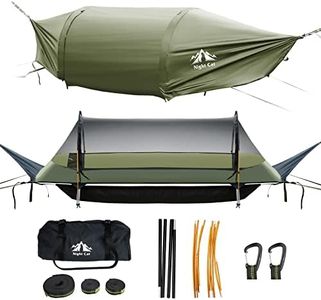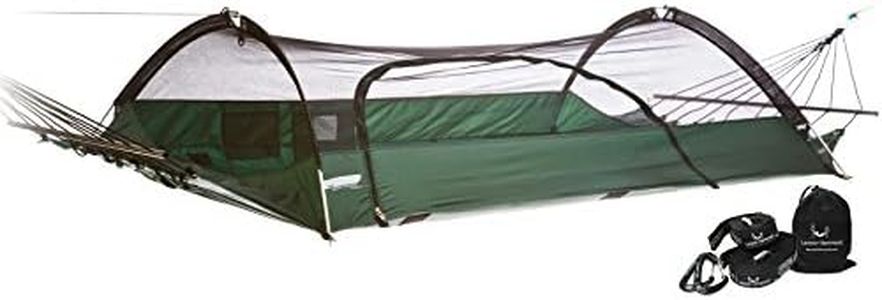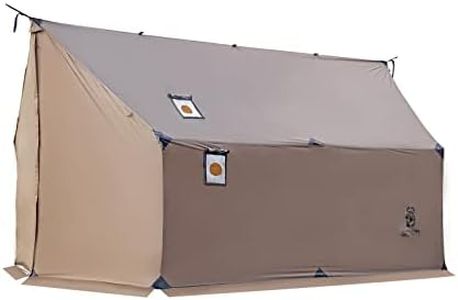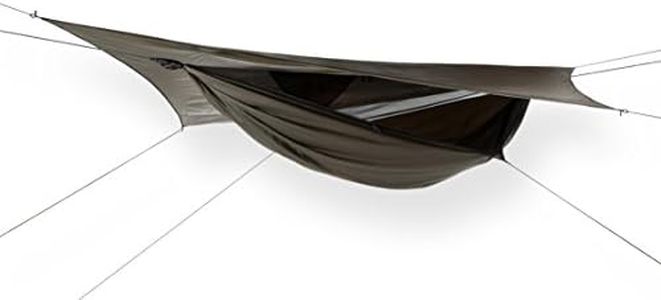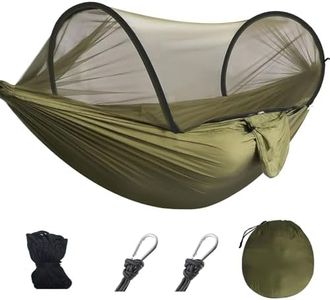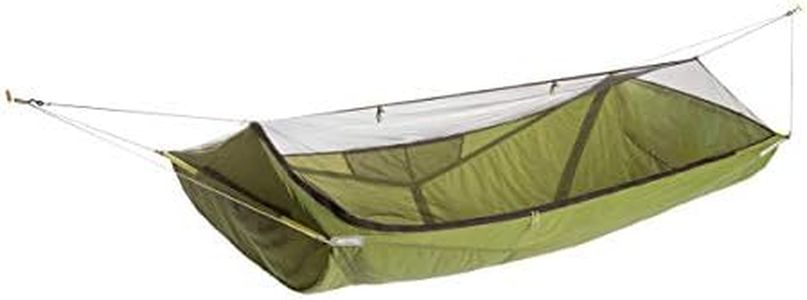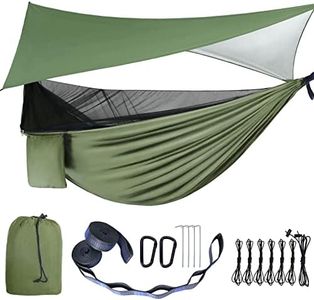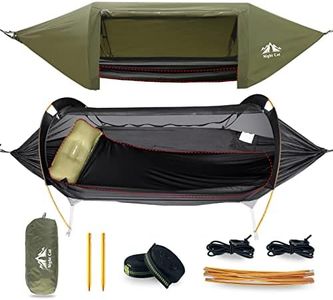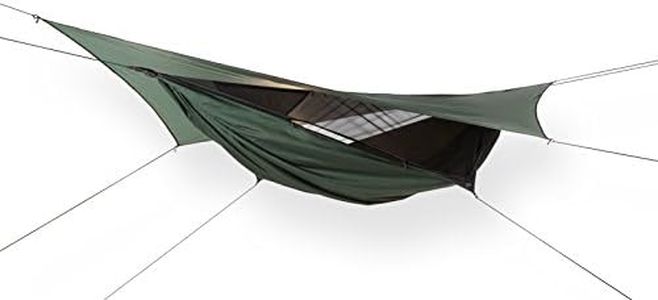We Use CookiesWe use cookies to enhance the security, performance,
functionality and for analytical and promotional activities. By continuing to browse this site you
are agreeing to our privacy policy
10 Best Hammock Tents
From leading brands and best sellers available on the web.Buying Guide for the Best Hammock Tents
Choosing a hammock tent can be a fun way to upgrade your camping comfort. Hammock tents let you sleep suspended above the ground, safe from rocks, roots, and dampness, but picking the best one for you means matching features to your own camping style and needs. Before you buy, think about where and how you’ll use it most—consider factors like your weight, height, climate, ease of setup, and how much extra weather protection you want. Do a little self-reflection: Will you be backpacking for days or just chilling in the backyard? Do you prefer lightweight gear, or is comfort your top priority? Understanding your habits makes it much easier to select the hammock tent that will truly fit your adventures.Weight CapacityWeight capacity tells you how much weight the hammock tent can safely support. This is important for personal safety and for ensuring the longevity of your gear. Hammock tents usually list a maximum weight, which can range from around 200 pounds for ultra-light models to 400 pounds or more for heavy-duty options. For solo users, just check that your weight plus whatever you’ll keep in the tent (like sleeping bags or gear) stays under the limit. If you plan to snuggle up with someone—or sometimes share with your child or dog—look for a higher weight threshold.
Size (Length and Width)The physical size of the hammock tent affects your comfort while sleeping. Length and width vary between compact, single-person hammocks and spacious, double-size models. For most adults, a hammock around 9 feet or longer is the minimum for a comfortable lay, but taller people might want something even longer. The width impacts whether you can sleep diagonally (for a flatter lay) or if you’ll have extra space for gear or a partner. If you tend to move around in your sleep, a little more width can feel more secure and pleasant. Find a size that feels roomy, but not so big it’s cumbersome to carry.
Bug ProtectionBug netting is a key part of many hammock tents, offering protection from mosquitoes and other biting insects. Some come with built-in nets, while others have detachable options. In buggy areas, a full-coverage integral net is essential. If you only camp in bug-free seasons or indoors, you might skip this feature for a lighter setup. Think about where you’ll be sleeping most—if you dislike the thought of night-time bites, consider the style and pore size of the netting as well.
Weather Protection (Rainfly or Tarp)A rainfly is a waterproof cover that shields your hammock tent from rain and sometimes wind. Some hammock tents come with a rainfly included, while others require you to buy one separately. If you want all-weather versatility, look for a rainfly that has good coverage and can be set close to the hammock to prevent sideways rain. People camping in dry climates may prefer a minimalist fly or even none at all, while those braving unpredictable weather will need a robust, full-coverage solution.
Suspension SystemThe suspension system involves the straps and carabiners that hold the hammock tent between trees. Some systems are simple, while others are more adjustable or protective of tree bark. Heavier-duty and wider straps are friendlier to trees and often easier to use. Quick-attach systems can save time if you move camp often or if you’re new to hammock camping. Check that the included suspension gear is long enough for your usual camping spots, or plan on upgrading if you need more flexibility.
Packed Weight and PortabilityPacked weight refers to how heavy the hammock tent is when stowed for carrying. This is crucial for backpackers and hikers, who need the lightest gear possible, but less critical if you’re car camping or setting up in the backyard. Hammocks range from ultralight models weighing under a pound to rugged options over 3 pounds, especially when weather protection is included. Consider how far you’ll carry your hammock tent—if you’re hiking for miles, every ounce matters.
Insulation and Comfort FeaturesSome hammock tents offer built-in features for warmth, like double-layer fabric for adding sleeping pads or quilt clips for underquilts. Since air circulates below you in a hammock, you’ll need more insulation than in a tent on the ground. Think about when and where you camp: If you’ll be hammocking in cool temperatures, look for options that make it easy to add a pad or an underquilt. Warm-weather campers can prioritize breathability instead.
Ease of SetupNot all hammock tents go up the same way—some are intentionally designed for speedy assembly, while others require careful adjustment. If you’re a beginner, or if you like to keep things simple after a long hike, choose a system known for fast, intuitive setup. Seasoned campers might not mind fiddling with a more complex design if it means more options for adjustment and comfort.
